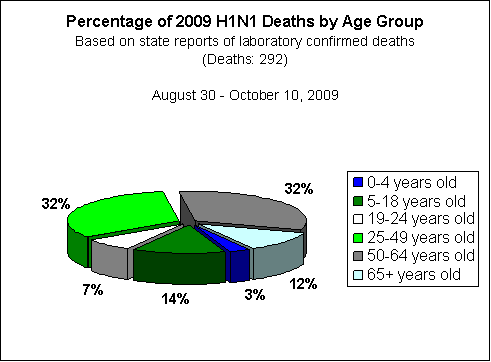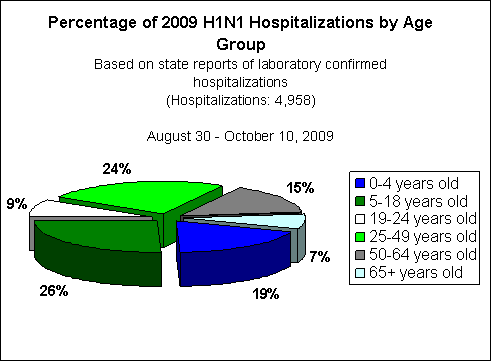PAUL KAHAN is one of Chicago’s best chefs, and his restaurants are reliable bellwethers for what’s going on in the city’s dining scene. When Blackbird, his first restaurant, opened 12 years ago, it presaged Chicago’s rebirth as one of the planet’s most dynamic restaurant cities — a promise fulfilled by restaurants like Alinea, Schwa and L20. Mr. Kahan followed Blackbird with Avec and the Publican, restaurants that are less formal, better suited to a city that needed less pomp and polish to go with good food.
A few weeks ago, Mr. Kahan opened a fourth restaurant,
Big Star Taqueria and Bar, in what was once a mechanic’s garage. There’s country on the jukebox and a complement of tequila behind the bar, but the real draw is the tacos, including spit-roasted al pastor, which go for $2 apiece.
The extremes have long been the best places to eat in Chicago: the city is home to some of the world’s finest temples of haute gastronomy as well as its greatest collection of hot dog stands. But the middle ground — the world between the direct pleasure of a salty, snappy dog and the epic degustation menus at the city’s fanciest restaurants — has been a notable absence.
No more. In the past few years, a number of chefs and restaurateurs have taken on everyday foods, revisiting, revising and approaching them with care and, often, a twist or two.
Big Star isn’t the only news in the Mexican scene in Chicago; Rick Bayless — whose Topolobampo and Frontera Grill have reigned over the Chicago Mexican scene for 20 years — has just opened a third spot. He, too, went for the middle, opening
Xoco (pronounced SHO-ko), a torta, soup and churros place that is primarily a lunch destination. The menu tops out at $12.50.
“I didn’t want to do tacos — we do those in Frontera,” Mr. Bayless said in a recent interview. “I wanted to bring street food flavors inside and offer them at a price point for other people that can’t afford to come to the other restaurants.”
Xoco has a casual vibe, like a cheerier, more colorful Chipotle Grill. A quick scan of the menu, though, makes it clear that there’s more to Xoco than meets the eye: there are headcheese tortas, drip coffee brewed to order and served in handsome glass Chemex pots, and a half-dozen more farm names than you usually encounter on a chain restaurant’s menu.

Tortas, Mexican sandwiches, are the specialty at lunch, and the selections cooked in the restaurant’s wood-burning oven are your best bet (the griddle-cooked tortas were too cheese-driven for me, though if a grilled cheese is what you’re shopping for, the griddle is the way to go). The pepito — an assemblage of short ribs, black beans, caramelized onions and pickled jalapeños — is as good as its ingredient list reads, with bread toasted to a wonderful crispness by the oven. The woodland mushroom torta is no mere concession to vegetarians; Mr. Bayless’s decades of mastering Mexican flavors have somehow imbued him with the power to turn a goat cheese, mushroom and arugula sandwich into a bold Mexican sandwich. (Maybe the secret is the three-chili salsa.)

Tortas are available after 11 a.m., and they come off the menu at 3 p.m. to make way for Mexican soups. But the restaurant actually opens at 7 a.m., serving a phenomenal rendition of a combination of foods I first learned about from the title of a Spanish-language textbook I read in the sixth grade: churros y chocolate. The churros are crisp and fresh, dense in the traditional fashion, rolled in a dirty snowfall of cinnamon sugar and served warm. The hot chocolate features freshly ground cacao beans, and the drinks are predictably killer. The Barcelona, one of Xoco’s options, is so thick you can stand your spoon up in it, and so rich with bittersweet chocolate flavor it could do double duty as a dessert.
It’s not just Mexican fare that’s getting pulled out into the spotlight: Michael Kornick, the chef of MK, which twice has been awarded three stars from The Chicago Sun-Times since it opened in 1998, recently opened DMK Burger Bar, where he is serving grass-fed beef, truffle fries and house-made sodas, including blood orange and cherry.
But it is
Kuma’s Corner, which Matt Cain opened four years ago on the North Side, that has been attracting the most attention of late. It is notorious for the wait to get in (long; no reservations accepted), the music it plays (heavy metal), the bourbon on tap (um,
bourbon on tap) and, most of all, its burgers.
The night I visited, the hostess — tattooed and pierced — was direct and chipper about the 60- to 90-minute wait. (On a Monday night, I should add.) She added my name to her list; my younger brother noticed that next to each name is a description to help her differentiate customers; I was “scruffy, odd.” Fair enough.
I DON’T know what I was expecting — guns? outlaw bikers? — but the restaurant, with its high ceilings and a pleasing corner location, didn’t end up all that threatening. Sure, there were drawings of half-naked female vampires on the walls, a scrawl reading “Die Emo Die” above the bar, and the incessant and propulsive fluttering of double-kick bass drums chugging under growled vocals on the sound system all night, but my girlfriend’s parents — not the target demographic, one assumes — described it afterward as “a hoot.”
And the burgers are good. Big 10-ounce patties are grilled reliably to temperature and served on soft pretzel buns. The buns aren’t chewy or intrusive, but they are strong enough to keep the burgers, however wildly they are dressed, together, and they add an alkaline tang that complements the beefiness of the burgers.
There are 20 or so options for topping combinations, most named after metal bands, each progressively crazier. The most popular and probably the best is the Kuma Burger: a fried egg, bacon and Cheddar. I am typically averse to such profligate assemblages, but there’s something special about Kuma’s particular combinations — not harmonious, exactly, more like the often cacophonous sounds of the heavy metal that fills the room, channeled into burger form.
For an atmosphere as quiet as Kuma’s is loud, head to
Great Lake in Edgewater, on the far North Side. Lydia Esparza and Nick Lessins opened the place last year in a tiny space with a homey feel — a mishmash of modern furniture, a few seats and a set of shelves where they sell an assortment of products they like, including wooden knitting needles. (Mrs. Esparza designed showrooms for Herman Miller before plunging into Great Lake; Mr. Lessins worked in consulting.) Mrs. Esparza said that Mr. Lessins had been working on a pizza recipe at home for years and, at a certain point, the couple decided it was time to bring it to the people. The transition from unseasoned home cook to restaurant chef has, I contend, never gone as well for anyone as it has for Mr. Lessins. This summer, Alan Richman, the food writer for GQ, called the mortadella pie the best pizza in the country. Having not visited quite as many pizzerias as Mr. Richman, I can only say that Great Lake’s pies are the best pizzas I have ever eaten in my entire life.
They hew to no traditional style — neither Neapolitan nor Chicagoan nor New York. But the crusts have a perfectly irregular crumb, pleasing but not overly chewy, with a yeasty tang, and they are crisp enough to stand up to whatever Mr. Lessins tops them with. (Digression: Chicago pizza is commonly associated with the baked casserole that is deep-dish pizza, but the more prevalent style features a thin, cracker-crisp dough, cut into a grid, not wedges.)

The toppings at Great Lake are sourced with an aggressively local bent; Dante and Mona — two cheeses from the Wisconsin Sheep Dairy Cooperative — have supplanted pecorino and Parmesan, and the mozzarella is local and freshly made. Some of Mr. Lessins’s combinations look unappetizing on the menu and then turn out to be knee-weakeningly good. The heirloom squash and country ham combo, for example: razor-thin curls of squash baked into the cheese, with the ham (from Newsom’s, one of the country’s best purveyors) sliced prosciutto-thin and draped over the finished pie.
There are a few caveats: Great Lake has severely limited hours (Wednesday through Saturday at the moment, though Mrs. Esparza encourages diners to call ahead and see if they’ve changed), it is BYOB, the service can be profoundly slow (pizzas are baked to order, one at a time), and waits can be tremendous. None of these things would stop me from going back.
TOPPINGS
Prices are estimated for two people, not including taxes, tip or beverages.
Big Star Taqueria and Bar, 1531 North Damen Avenue; (773) 235-4039. Dinner, $15 to $18.
Xoco, 449 North Clark Street; (312) 334-3688; www.rickbayless.com/restaurants/xoco.html.
Lunch, $15.
Kuma’s Corner, 2900 West Belmont Avenue; (773) 604-8769; www.kumascorner.com. Dinner,
$12.
Great Lake, 1477 West Balmoral Avenue; (773) 334-9270. Dinner, $25. (Open Wednesday and Thursday 5 to 9 p.m. and Friday and Saturday,
5 to 10 p.m.)







 Download 72 dpi JPEG image:
Download 72 dpi JPEG image: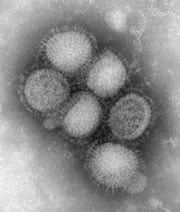 Download 72 dpi JPEG image:
Download 72 dpi JPEG image: Download 72 dpi JPEG image:
Download 72 dpi JPEG image: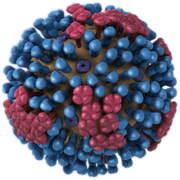
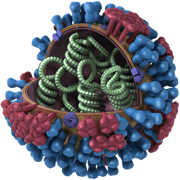
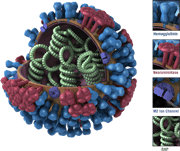
 Download 72 dpi JPEG image:
Download 72 dpi JPEG image: